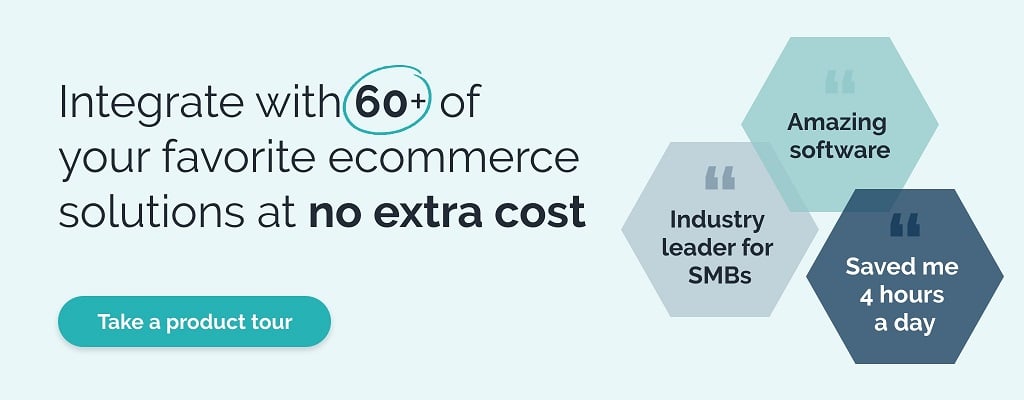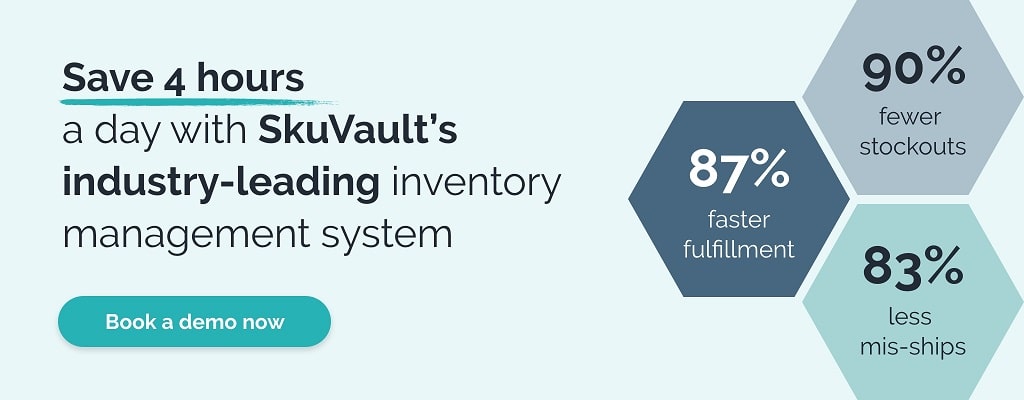
Why sell used stuff online?
In 2017, 40% of secondhand purchases happened on the web. According to the 2020 annual report for the popular secondhand fashion app ThredUp, the secondhand market is poised to hit $64 billion globally by 2025.
The advent of numerous websites for selling stuff online has transitioned second-hand retail from the outskirts into the mainstream, making it a significant consideration for those looking to sell products online in their own store.
Yet, initiating a venture in the realm of online selling platforms can feel like navigating a complex labyrinth. It raises questions regarding scalable growth while preserving profitability, effective inventory management, and selecting the optimal marketplace to sell items.
In this post, we’ll delve into the reasons why people buy used items and how you can start selling online for profit. We’ll also explore the best online selling sites to try, offering valuable insights for your own store’s success.
Finally, we’ll conclude with some pro tips on the best ways to sell stuff online that you no longer use. But first, let’s establish an understanding of the pros and cons of selling things online.
Pros of Selling Used Items Online
- Access to a vast audience: Online selling sites like eBay have millions of users, providing potential for high visibility for your items.
- Built-in trust through reputable selling platforms: Sites with strong name recognition lend credibility to your virtual storefront, increasing buyers’ confidence.
- 24/7 selling opportunities: Unlike physical markets, online platforms operate round-the-clock, allowing sales anytime.
Cons of Selling Used Items Online
- Limited storytelling opportunities for your items: Online listings provide limited space for describing an item’s history or value, requiring effective copywriting skills.
- More price-conscious consumers due to the ease of price comparison: Online shoppers are likely to compare prices systematically, making them more sensitive to price variations.
- Increased consumer skepticism due to the inability to physically inspect the items: Buyers might be more cautious as they can only rely on photos and descriptions to assess an item’s condition.
Places to Source Used Items to Sell
There are a few tried-and-true places to find hidden gems for your secondhand venture. However, keeping the “opportunity cost” principle in mind is important. Every hour spent digging through thrift store bins is an hour taken away from actually selling.
This may be a net positive if you find a rare item that makes it all worth it. But make sure you’re not losing money while sourcing items for your storefront.
That said, here are the most commonly-utilized places to source used items:
Garage sales
Garage sales are some of the best places to find used items because, frankly, most garage sellers are ignorant of the true value of their items.
Coupled with the fact that garage sales are all about convenience (getting rid of the item), this makes them a prime setting to negotiate lower prices.
Thrift stores

Rare used items often reach thrift stores like Goodwill and the Salvation Army. The benefit of these stores is their open hours (unlike garage sales), making them easy targets for a daily quick scan.
The truly great items tend to get snatched up pretty quickly, so rather than going for an hour-long trip, favor periodic, quick store scans. This also keeps your opportunity cost low so you’re not wasting precious time.
Flea markets
Flea markets, like garage sales, are usually time-bound to weekends. This means you must be more intentional about your flea market runs to get the best items.
Also, get there at least 20 minutes before they open to ensure you get the first picks of the available goods.
Craigslist
Craigslist, similarly to garage sales, is often full of sellers ignorant on the true value of their items. Also like garage sales, it’s full of people looking to purge and primed for negotiation.
The advantage over the traditional garage sale experience is that with this online selling site, you can do it from anywhere and it’s open at all hours.
The Best Websites to Sell Used Stuff Online
So, now that you have your ideal buyer and a strategy in mind, you’re ready to choose a platform to start selling your used items.
The best way to sell stuff online is to connect with your target demographic and their particular search query. In other words, meet them where they already go.
If you don’t have your own website for eCommerce selling, your best bet is to utilize 3rd-party marketplace websites.
There are dozens of online selling sites, but not all are created equally. In the following sections, we’ll examine sites with varying levels of regulation, listing fees, marketplaces that lend themselves well to bulk sales or storefronts, and more.

Top Online Selling Sites for Listing Used Items
AMAZON
With such a ripe harvest of secondhand profit to be made, there’s no way that the largest marketplace on the planet would miss out on tilling those fields.
However, Amazon’s individual seller program is not built to be a garage sale substitute, and the quality standards are high to promote more online sales.
This means you can’t just list your used stuff with some haphazard smartphone pictures like you would on eBay, Craigslist, or Facebook marketplace.
Instead, consider the Fulfillment by Amazon (FBA) program as a viable vehicle for selling your used stuff.
The program is designed for individual sellers who need 3rd-party support from Amazon, but you can use it as a means to sell your used items online.
On most Amazon product pages, underneath the description, you’ll see a small link that reads, “New & Used from $90 + FREE shipping.”
Clicking that link will reveal all the used listings submitted by sellers and fulfilled by Amazon.
Here’s how you can get listed in those spots: create an Amazon FBA account, gather your used items, box them, and document each item in the box with its UPC, ISBN, or ASIN. Then, follow Amazon’s prompts for shipping. It’s that simple.
You will pay a fee to compensate Amazon for fulfilling, listing, and providing customer support on your items.
Interested in learning more about selling on Amazon? Check out our series on how to set up an Amazon seller account.
Amazon is the original online selling site and has tremendous potential for anyone who wants to start selling online.
ETSY

Etsy is the undisputed premium marketplace for handmade and crafted goods. However, it also has a thriving storefront for vintage items.
The bar for quality is high, though. You can’t just ship them a bunch of used stuff and hope for the best. Etsy considers vintage items to be 20 years or older.
This means Etsy is one of the top online sites for vintage items, including:
- Furniture
- Collectibles (like cards or figurines)
- Musical instruments
- Clothes
- Art (sculptures, paintings, decor)
- Books or magazines
Selling on Etsy affords significant benefits: you won’t be competing against waves of low-value junk. In fact, Etsy’s selling infrastructure is top-notch, and it attracts a clientele that’s often willing to spend more money on your unwanted stuff.
Etsy charges a $0.20 per item listed and you’ll also pay fees on all online sales – currently fixed at 3.5% commission.
EBAY
I’d venture a guess that the words “online selling site” conjures up an immediate picture of the iconic multi-colored eBay logo. Since its inception, eBay has positioned itself firmly as the online auction house for used items.
Listing items on eBay is a breeze thanks to its easy to use app. Snap a few smartphone pictures, answer some prompts, and your item is online in less than five minutes. However, selling items here and there is one thing, but understanding eBay’s fee structure is essential if you plan on selling items en masse.
As a general rule, expect to fork over around 10% of the final sale price to eBay (not including sales tax). When you start scaling up your selling, eBay starts scaling up their transaction fees. List more than 50 items per month, and they’ll start charging you 30 cents per listing.
eBay also offers various upsells for more prominent listing locations and reserve prices. And you can print a prepaid shipping label at home to save you time at the post office.
Learn more about the ins and outs of selling on eBay on our blog.
BONANZA
Bonanza is a scrappy, self-proclaimed eBay, Amazon, and Etsy alternative. It’s positioned itself so competitively as the better online selling site that right on the homepage are comparisons to those specific companies.
It’s got an Etsy vibe, especially when it comes to collectibles, clothing, and jewelry. But it also features musical instruments, video games, and home & garden supplies.
Bonanza offers more control over storefronts than Amazon or eBay and even allows for generating customer lists for remarketing purposes.
It’s got a certain “startup” charm that makes it appealing and worth a look for selling your used stuff online.
Note that Bonanza charges 3.5% of your final sale price (including shipping costs). For items over $500, they reduce that transaction fee to 1.5%. And, for an upcharge, they’ll platform your listing on the web using ads.
Local Online Marketplaces for Selling Stuff Online
Local online marketplaces are ideal for sellers who don’t want to deal with processing, shipping costs, and tracking their wares.
While local marketplaces’ convenience is unmatched, remember to meet buyers in a safe place and be extra wary of scammers. Generally, local marketplaces aren’t sustainable for large-scale storefronts or bulk online sales.
CRAIGSLIST
Craigslist hasn’t evolved much since its creation. It’s still got the same plain, Web 1.0, Times New Roman aesthetic (perhaps that’s part of its charm?). It’s still the Wild West and probably the most deregulated marketplace on the internet.
Craigslist is a bit like the Goodwill of the web. Sellers know that they may have to wade through piles of unwanted stuff to find a treasure. That’s sort of become part of the appeal, though (note the treasure hunt emotional motivator mentioned above).
Craigslist isn’t set up to manage a full-on used item storefront. However, if you’re looking to make a quick buck on a few items here and there, it’s a viable choice for online selling.
It’s also unique in its ability to host items for sale, jobs, cars, and even houses.
FACEBOOK MARKETPLACE
Facebook Marketplace serves as a more organized and regulated alternative to Craigslist. Although it’s not designed to accommodate large-scale used item enterprises like some of the aforementioned marketplaces, it’s an excellent platform for individual sales of used items and an ideal place to sell stuff locally.
What Facebook Marketplace lacks in scale, it compensates for in convenience and security. The storefront is seamlessly integrated into the Facebook app, and the platform’s social element enables sellers to vet potential buyers through their profiles (given they’re not set to private).
This process significantly helps eliminate scammers, con artists, or generally unsafe individuals. It’s much more challenging to create a convincing fake profile on Facebook than on Craigslist, or at least, it’s harder to go undetected on Facebook.
Moreover, the convenience factor is noteworthy. It’s not uncommon for items listed on Facebook Marketplace to be sold, with cash in hand, in under an hour. So, if you’re looking to avoid the regulations of larger marketplaces and prefer to sell stuff online locally, Facebook Marketplace presents an excellent option.
OFFERUP
OfferUp started as a sort of “anti-Craigslist.” The founders wanted to build upon the open marketplace concept while offering differentiators that solved common frustrations.
Their infrastructure and item variety is very similar to Craigslist. But instead of a web layout that looks like somebody made it in Microsoft Publisher (Windows 98 version), OfferUp features a clean, modern user interface.
Like Craigslist, it’s all local and all free. Meaning, it’s up to you to coordinate the sale and delivery of your item and field any questions from the buyer.
Speciality Online Marketplaces for Selling Used Stuff
REVERB.COM
In 2013, David Kalt was frustrated with the lack of quality online marketplaces to buy and sell used guitars. His solution? Create his own.
Six years later, Reverb.com was acquired by Etsy for $275 million and is now the de facto online shopping marketplace for all musical gear and equipment.
Musical instruments are one of the many items that lend themselves well to secondhand sales. Most musicians don’t care if five other people have used their guitar effects pedal or it’s got a few scuffs on it, as long as it works when they activate it during a performance.
Reverb.com features new, used, and vintage music gear of all kinds in every imaginable category. Its buying and selling infrastructure makes swapping gear easy and convenient. Reverb’s mobile app makes it easy to list items, and their real-time price evaluations help sellers get the most for their listing.
DECLUTTR

Decluttr’s core value is being a marketplace to buy and sell quality used technology. This includes cell phones, computers, and cameras, but also DVDs and Blu-rays as well. Decluttr is ideal for both the technophile and collector.
But Decluttr includes another seemingly random differentiator that makes it all the more valuable for collectors: a robust second-hand LEGO buying program. Even if you don’t remember what LEGO sets you bought or can’t find all the pieces, Decluttr purchases LEGO based on weight.
Just pack up your old LEGO bricks, weigh them, ship them for free, and enjoy Decluttr’s fast next-day payment.
If you’ve got quality used technology, media, or a giant bin full of LEGOs sitting around, Decluttr may be your best option.
Insider Tips: Best Practices for Online Sales
STEP 1: PREPARE YOUR ITEMS
You’re likely reading this post for two reasons:
- You’ve just completed a household or workplace purge, and you’re ready to make some cash by selling your stuff online.
- You’re starting a used item storefront or bulk selling operation.
Either way, the first step is always to prepare your items for sale. Follow this step-by-step process, and it’ll save you many headaches down the line:
- Inspect all items for defects and test them if they’re electronic
- Organize your items into categories
- Store the items in an open/easy-to-access location
- Search for each item on the marketplaces above to get an average valuation
- Prepare packaging and shipping materials to avoid multiple trips to the store

STEP 2: GET (AND STAY) ORGANIZED
The second step is to implement an inventory management system to corral and organize all of your used items before you put them up for sale. Otherwise, you’re going to find yourself overwhelmed once all the sales start coming in.
To start, create a simple Excel sheet enumerating:
- Your items
- Their location
- Your ideal selling price
- The actual selling price
- The date sold
A spreadsheet is better than nothing, but as your secondhand retail venture grows and becomes more complex, ecommerce inventory management software is going to be your best bet for staying on top of everything.
SkuVault’s inventory management platform (which integrates with most major online retailers) offers features like:
- Barcode scanning to eliminate manual errors and increase speed
- Cycle counting to maintain accurate inventory levels
- Automatic quantity syncs to make sure your listings reflect your on-hand inventory, thus preventing oversells and out-of-stocks
- Quantity buffers to create a sense of urgency in potential customers when they view your listings
STEP 3: TAKE THE PERFECT PHOTOS
When you’re photographing your used items for your ecommerce listings, there are some obvious considerations: good lighting, showing the product at an advantageous angle, and so forth.
But did you know that it’s also crucial not to have anything personal in the photo? Don’t snap a pic of that cell phone resting in your hand.
Make sure that framed photo of your children isn’t propped up behind that pair of high-heel shoes. Remove any detail that reminds the viewer that the item had a previous owner.
If you’re serious about scaling your secondhand operation, consider investing in a product photography box or simple shooting tent like this one.
STEP 4: WRITE ACCURATE BUT STRATEGIC DESCRIPTIONS
Be as accurate as possible when drafting your item listings. Don’t gloss over any defects, for instance. That’s a sure way to dissolve the buyer’s trust and is also sure to result in negative reviews.
At the same time, be strategic with your words. Keep the following points in mind:
- Do you know your item’s provenance? If you have a good story about how you got the product or who owned it before, find a compelling way to tell it!
- Is there something unique or unusual about your used item that might attract the attention of those unicorn-hunting buyers?
- Is your used item rare and hard to find via traditional retail channels?
- Final pro-tip: Never use the words “as good as new” (or similar phrasing) in your listing. Those kinds of phrases immediately remind the buyer that the item has had a previous owner, resulting in a negative perception. Favor phrasing like “in mint condition.”
STEP 5: GET YOUR SHIPPING PROCESS SQUARED AWAY
So you’ve got all your used stuff organized, and you’ve crafted some tip-top strategic listings. What’s the final piece of the puzzle? Getting those items in the hands of your customer.
Some websites might assist you with order fulfillment, but usually, sellers are on their own when it comes to figuring out how to pack and ship their products, facilitate returns, and so on.
Like in the first insider tip we looked at, this is another arena where inventory and shipping management software like SkuVault can prevent unnecessary stumbling blocks to success.
Final steps
The journey towards creating your own store for selling used items online is an exciting adventure ripe with untapped potential and profitable avenues. As we have explored, the used goods marketplace is far from diminishing; rather, it’s expanding rapidly with promising growth projections.
Embracing the opportunities offered by secondhand ecommerce platforms not only fosters a sustainable culture but can also lead to a profitable business venture. Whether you are venturing into the realm of online resale as a hobby or as a serious entrepreneurial move, your own online store can play a significant role in shaping the future of the secondhand market.
In the evolving ecommerce landscape, the art of selling used items online is no longer a niche, but an essential part of the broader retail ecosystem.
The key to success lies in understanding the market, maximizing the tools at your disposal, and constantly adapting to new trends and customer preferences.
Good luck with your endeavors and feel free to book a demo to try out SkuVault’s time-saving inventory management software for yourself!

